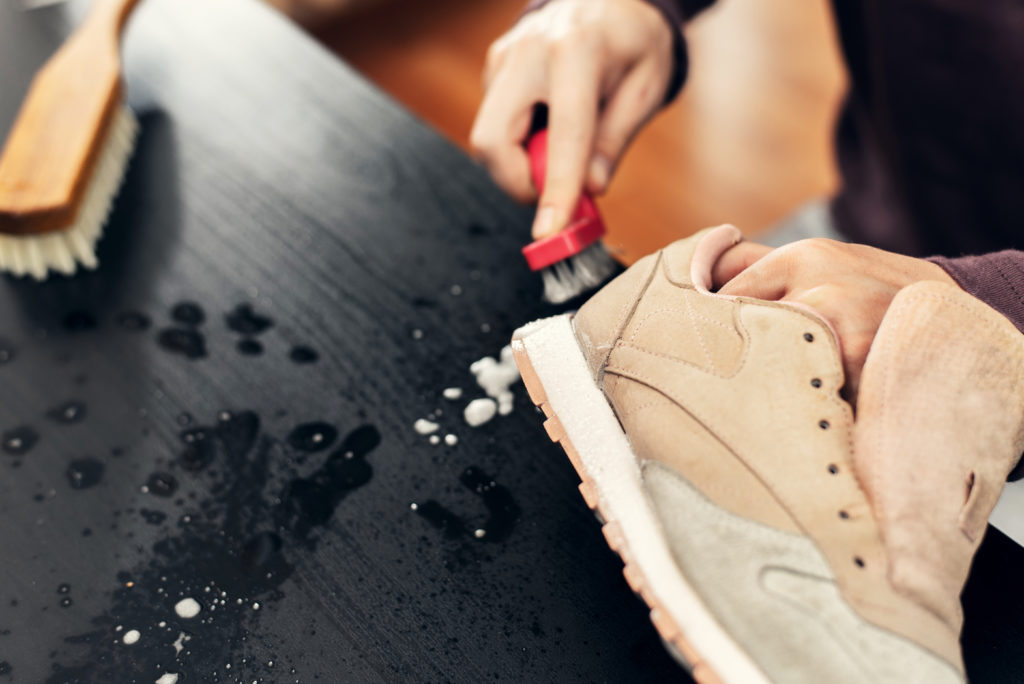
How to Wash Shoes with Charlie’s Soap
Who doesn’t love a new pair of shoes? Whether it be going to the gym to work out or dressing up for a nice dinner, new shoes are always a great touch. Yet, new shoes quickly get dirty and lose much of their original shine with just a few light outings.
It’s a good idea to wash your shoes whenever possible to keep them looking the best. However, with so many types of shoes on the market, knowing how to clean them can be a complicated task. While some shoes can handle a rigorous cleaning, others require a careful touch.
To help you stay looking your best, Charlie’s Soap wanted to walk you through some of the basic foundations for effectively cleaning shoes.
Why are Shoes Hard to Wash?
Shoes are hard to wash because they come in many shapes and sizes. Even more, a single shoe can be made of several different materials – such as leather, rubber, wood, and canvas. Beyond basic textiles, each pair of shoes is held together with glue and stitching.
Due to the diverse materials used for shoemaking, it is tough to devise any “cookie-cutter” method for cleaning them all. In the end, techniques used to clean a pair of leather dress shoes will be much different than those used for canvas tennis shoes.
For the reasons mentioned above, cleaning shoes is much more complicated than washing most basic clothing. For example, you can safely wash just about any cotton shirt exactly the same way. Unfortunately, you don’t have this same luxury with shoes.
What Types of Shoes Can You Clean in a Washing Machine?
Generally speaking, tennis shoes are the only type of shoes you should clean in the washing machine. Because they are made from durable materials, athletic shoes can handle the washing machine’s immersion in water and agitation.
Other types of shoes like leather dress shoes and fabric sneakers must be hand washed. In both cases, a little water and a washcloth will go quite a ways in getting them clean. Other considerations to make would be using white vinegar for leather or a light detergent for fabric.
Note:
Do not use Charlie’s Soap on suede or soft leather, as it will darken or discolor the shoe.
Steps for Cleaning Your Shoes in the Washing Machine
Once you have chosen a pair of shoes you know can handle the rigors of the washing machine, its time to get started on cleaning them.
Shoe Preparation
To prepare your shoes for the washing machine, start by treating them with a pre-wash treatment like Charlie’s Soap Pre-Spray Stain Remover. Simply apply the pre-spray stain remover on your shoes and give them a good scrub with a soft bristle brush. After the treatment has had time to work, your shoes are ready for the washing machine.
Machine Preparation
To run shoes in your washer without damaging the machine, you should add old rags, t-shirts, or towels to the load with your shoes. These added materials will cushion the sides of the machine from impacts with the shoes. When the machine begins agitating, the extra cushions will help keep the machine’s interior safe.
Washing Shoes
When it comes time to finally wash your shoes, remove the insoles and laces from your shoes, these extra items should be hand washed separately. Next, run your shoes on a gentle cycle with cold water.
For best results, be sure to use a high-quality laundry cleaner such as Charlie’s Soap Laundry Detergent. Because our detergent doesn’t have any additives or harsh chemicals, it will get your shoes clean without damaging the materials or glues with which they are made.
Drying Shoes
At Charlie’s Soap, we always recommend you air-dry your shoes. Running shoes through a dryer will not only weaken the glues holding them together but can also damage the dryer. Even worse, drying wet tennis shoes at high heat can cause an awful stink in your house!
Talk to Charlie’s Soaps About Your Cleaning Needs
At Charlie’s Soap, we believe in making shoes and clothing last as long as possible. Please Contact Us to learn more about our products and cleaning methods.

Leave a Reply